- Home
- Deborah Harkness
The World of All Souls Page 41
The World of All Souls Read online
Page 41
Late sixteenth-century swept-hilt rapier of French origin. Forty-eight inches long. From the de Clermont private collection.
Background: While Matthew and Diana were at Sept-Tours in the sixteenth century, Philippe goaded Matthew into a swordfight in the hay barn. The long, tapering sword that Matthew used might have been a rapier, which was lighter and longer bladed than earlier swords. The rapier originated in Italy and Spain and was used throughout Europe as the sixteenth century progressed. It reflected the move toward the idea of swordfighting as a private duel between two men, as opposed to combatants on the battlefield. Philippe, on the other hand, used a shorter sword in conjunction with a shield, in the manner of the ancient Greeks.
This rapier, of French origin in the late sixteenth century, is an example of the type of sword Matthew might have used.
French Dagger (late fifteenth century)
Armaments Room, Armory Tower, Sept-Tours, France
Dagger made of steel, bronze, and bone.
Background: Philippe’s dagger that Diana used to kill the wizard André Champier might look something like this one, modeled on a late fifteenth-century weapon held at the Metropolitan Museum of Art. It would have fit quite effectively in Philippe’s boot—not to mention Champier’s heart.
Jeweled “Unicorn” (Narwhal) Horn Cup (late sixteenth century)
Schloss Klarberg, Germany
Cup made of narwhal horn, enameled in gold and decorated with gemstones. The handle at the top is composed of a double cameo, probably made by the Miseroni workshop in Milan.
Background: According to Rudolf’s personal physician, Anselmus Boëtius de Boodt, the unicorn’s horn was unsurpassed at identifying, forestalling, and counteracting the effects of any kind of poison. This made it perfect for administering medication to Diana in Prague. Rudolf was pleased that his remedy was effective, being unaware that Diana had faked illness to avoid him and never touched his noxious brew of mustard seed, juniper berries, and camphor.
Rudolf II’s cabinet of curiosities included a cup supposedly made from a unicorn horn (actually the horn of a narwhal, a whale that has a large tusk in the form of a protruding tooth), created between 1600 and 1605, just after Matthew and Diana were in the city. The gold enameling and precious stones on this cup were executed by Rudolf’s personal jeweler, Jan Vermeyen.
Baldwin de Clermont found the cup in a house in Prague and took it to his home in Germany. A similar cup is now held at the Kunsthistorisches Museum, Vienna.
Herm in a Niche (1600–1610)
Ottavio Miseroni
Kunsthistorisches Museum, Vienna
This carving of a female figure with auburn hair combines two forms of the art of stonecutting: cutting figures out of hard stone such as chalcedony, and commesso (also known as Florentine mosaic), the technique of adding hard stone or gemstones to a basic carving for decorative effect. Measures 16 centimeters by 8 centimeters. The commesso is composed of moss agate, carnelian, jasper, and mother-of-pearl. This piece is on loan to the museum from the de Clermont private collection.
Background: A herm is a statue in the form of a square or rectangular stone pillar topped by a bust or head, especially of the god Hermes. In ancient Greece, herms were used as boundary markers; later on they were for decorative purposes only. Herm in a Niche, an example of this genre, was crafted by Ottavio Miseroni (1567–1624).
The Miseroni family had been lapidary artists since the year 1460. Various kings and emperors competed for the services of such artists, setting them up with private workshops in their own courts, as Rudolf II did with Ottavio Miseroni and his brothers. When Diana was in sixteenth-century Prague, Rudolf asked that she sit for Ottavio and have her likeness “engraved in stone as a symbol of her permanence in his affections.” Ottavio produced this Herm in a Niche ten to twenty years after Diana and Matthew’s stay in Prague, perhaps inspired by his earlier encounter with Diana. It was later acquired by Philippe de Clermont and is now in the Kunsthistorisches Museum, Vienna.
Sèvres Vase, One of a Pair (Vase à Têtes de Lion) (1765–70)
Salon, Sept-Tours, France
Urn-shaped vase of soft-paste porcelain. Bleu nouveau ground color, lion heads in relief, and grisaille panels depicting putti and trophies. Measures 40.4 centimeters high.
Background: This item furnishes the grand salon at Sept-Tours. It was originally from a pair, but when Diana returned from sixteenth-century London with a firedrake familiar in tow, one of these prized vases of Ysabeau’s was a casualty. An exact replica can be seen in the collection of the Walters Art Museum in Baltimore, Maryland, which is one of only a few museums in the world that present a panorama of art from the third millennium B.C. to the early twentieth century.
Dried Brassica Root, with Figure (The Root of Eppendorf) (c. 1482)
Kunsthistorisches Museum, Vienna
A root of the common cabbage plant (Brassica oleracea) with a crucified male figure, its arms outstretched, incised into the root’s surface by person or persons unknown. The arms of the figure are broken off close to the shoulders, while the top of the root is crowned with a circlet of small seed pearls. This remarkable object, known as the Root of Eppendorf, is now in the Geistliche Schatzkammer, Kunsthistorisches Museum, in Vienna.
Background: Emperor Rudolf showed Diana this prized possession in sixteenth-century Prague, the so-called Root of Eppendorf, which he had recently procured from a nunnery in Hamburg. According to legend, this root was the miraculous result of an ordinary woman’s having buried in her garden a communion wafer that had been blessed by a Catholic priest. Such burials were frowned upon by the church, which regarded this as sacrilegious treatment of the consecrated host. But the woman was said to have done so in an effort to restore fertility to her failing soil. She appears to have succeeded, as her garden soon yielded an unusually huge cabbage. The cabbage itself was eaten, but the root, containing a remarkable figure of Christ, was preserved and widely admired, eventually ending up in the care of a nunnery. Many people of this period were already predisposed to associate plants like cabbages and broccoli with Christ: the original Latin name for brassica plants was Cruciferae precisely because many medieval Europeans believed that these plants’ four-petaled flowers mimicked the Holy Cross.
Baldwin de Clermont restored this item to the Hamburg nunnery c. 1650. How it came to be in the museum in Vienna is unknown.
Telescope (1591)
Private Collection
Earliest known refracting telescope, fashioned from a steel gun barrel and a convex and a concave lens. Engraved on a silver banner on the side: N. VALLIN ME FECIT, T. HARRIOT ME INVENIT, 1591. Not for sale (even to Ysabeau de Clermont). Currently in a private collection.
Background: By the late sixteenth and the early seventeenth century, there was sufficient knowledge about optics to make possible the invention of the telescope. The first refracting telescopes (that is, telescopes that relied on lenses to gather light and provide the image) were thought to have been made in the Netherlands in 1608.
It’s clear that many experts in lenses were arriving at the same idea around the same time. The scientist who stole the show, however, was Galileo. Galileo experimented with the inventions of the Dutch and improved on them, producing a version in 1609 that could magnify objects twenty times. Moreover, he applied his knowledge to the study of the heavens. His crowning achievement was to use his telescope to prove the Copernican theory that the earth and other planets revolve around the sun. Galileo is thus generally named as the inventor of the telescope.
Diana Bishop, however, knows that many a great idea has perished (or, worse, remained unattributed!) for lack of publication or proof. Thomas Harriot told Diana that his reading of Giambattista della Porta’s Magia naturalis, a work of popular science, had planted the idea that convex and concave lenses could be combined to enable men to see objects both far away and nearby. When
he shared his plan to create such an instrument, Diana suggested that Harriot immediately take his idea to Nicholas Vallin (famous maker of mousetraps) to produce a prototype. Vallin modified a gun stock for the tube and inserted the lenses. Most important, Diana had Vallin engrave the instrument with the inventor’s name and the date, providing incontestable evidence that Thomas Harriot, not Galileo, invented the first refracting telescope.
Thomas Harriot’s role in history remained undiscovered until the telescope was found in a niche in the bell tower of St. Michael’s Church in Alnwick in June 2010. How many other ideas and inventions still lie hidden and unclaimed?
Silver Coin (date unknown, possibly classical period)
Philippe de Clermont’s Study, Sept-Tours, France
A small, ancient silver coin, in the de Clermont private collection, its edges worn and thin, with some red-and-black sealing wax still clinging to the back and edges. The coin is stamped with a cross and a crescent.
Background: When someone received this coin, pushed into a red-and-black wax seal, it was a signal from Philippe de Clermont: He expected the coin returned to him with his order obeyed. Matthew received such a coin in sixteenth-century London, summoning him home to Sept-Tours. Diana was the last to receive such a message from Philippe, the letter kept safe by Alain to deliver to her in present-day London. This time Philippe was no longer alive for Diana to return it, but as he explained in his note, “The coin is for the ferryman. Tell Matthew I will see you safe on the other side.” There is a family legend that Philippe buried a bag of ancient coins just before he left on his disastrous mission to Germany in World War II. They have never been found.
Fashion
Dress Fabric and Petticoat Panel, English (1550–1600)
Private Collection
Fragments of dress fabric from a formal gown of fine black velvet, with designs of silver fleurs-de-lis and roses elaborately embroidered throughout the material. The petticoat panel is white satin, designed to be visible at the front of a dress’s divided skirts. The panel is embroidered with flora and fauna, as well as depictions of classical architecture, scientific instruments, and female personifications of the arts and sciences. Fabric and petticoat alleged to be from a dress owned by Mary Sidney, Countess of Pembroke, known to have been a favorite of Queen Elizabeth I.
Background: These items are from the dress that Diana wore to meet Queen Elizabeth I at Richmond Palace in the winter of 1590. Mary Sidney selected the gown from her own wardrobe, promising Diana that it would appeal to the queen. Its colors, black and silver, were the queen’s colors also, and Mary explained that its slightly dated style (its skirts were not as full as the current style of 1590) would signal a degree of humility and frugality on Diana’s part. The bodice would have had laces in back, with bouffant sleeves tapering at the wrists and edged with fine white cuffs. The gown was styled with a deep V waistline over a full, split skirt, revealing the petticoat beneath. This strongly resembled a dress actually worn by Elizabeth Brydges, maid of honor to Elizabeth I, in a portrait painted by Hieronimo Custodis in 1589. A similar petticoat panel from the late sixteenth/early seventeenth century can be seen in the collections of the Victoria and Albert Museum: collections.vam.ac.uk/item/O85436/petticoat-panel-unknown/.
Embroidered Sleeve, French (c. 1590)
Les Revenants, France
An embroidered sleeve, threadbare with age. From a gown of heavy gray silk, possibly French, ornamented with cornucopias and floral images stitched in rose, black, and gold thread (also silk). The laces of the sleeve are extensively damaged. The fastenings appear to have been torn away entirely at some point. The superb tailoring and the fertility symbols of the embroidered cornucopia suggest it might have been designed as part of a wedding dress.
Embroidered Sleeve
Background: This sleeve is all that’s left of La Belle Robe, the dress Diana wore for her wedding to Matthew at the village church near Sept-Tours in 1590. The dress was French and a relatively simple style, with a high neckline, an A-line skirt, and a bodice that narrowed to a V at the waist. Like most European gowns in the sixteenth century, it was composed of entirely separate pieces—a skirt, a bodice, and sleeves—which were then fastened together with ties at the seams (rather than being sewn together at the seams like a modern garment). This dress had double sleeves—a fitted sleeve underneath with another wider, hanging sleeve on top—both of which were tied to the bodice; the ties were hidden by tabbed flaps called pickadils. Diana’s dress was made for her by Monsieur Beaufils and Marie, Saint-Lucien’s best seamstress; it closely resembled the dress worn by an anonymous Lady of the Court in a portrait painted by Lavinia Fontana (c. 1590). It took the concerted efforts of three women to get Diana into her smock, corset, bodice, sleeves, skirt, and ruff. Matthew managed to help her out of it all by himself.
Sixteenth-Century Female Fashion Accessories
Mixed Lot of Women’s Underclothing, Overshoes (c. 1600)
The Old Lodge, Woodstock, England
Various women’s undergarments from the sixteenth and seventeenth centuries, England, discovered in an attic trunk.
Bumroll
ROLL: A roll (sometimes called a bumroll), a crescent-shaped tube of buckram cloth stuffed with rags designed to be worn under a skirt, curving around the backside and hips, in order to give the appearance of a narrow waist and a full skirt. Such rolls were commonly worn by all women in Elizabethan England.
Farthingale
FARTHINGALE: This is a circular frame of concentric rings fashioned of whalebone with willow supports and covered with starched linen. Designed for formal occasions, the farthingale was worn over a roll and under the gown’s skirt and petticoats, in order to hold the fabric well away from the body in the manner of a large birdcage or smallish wagon wheel fitted under one’s skirts. Extremely rare item. Unworn and in very good condition.
Women’s Stomacher
STOMACHER: The trunk also contained an embroidered women’s stomacher (linen over a whalebone frame), which would have been pinned over a dress front to cover the exposed laces of a lady’s dress.
RUFFS: Several fine, lace ruffs of various sizes. These would have been folded, starched, then pinned around the neck, framing a lady’s face.
PATTENS: The final items are a pair of woman’s wooden pattens, cloglike wooden shoes that were donned to protect the thin leather of her shoes and elevate her—and her skirt hems—several inches above the mud and filth of city streets. Well worn.
Background: After Diana left London in the summer of 1591, Françoise packed up Diana’s belongings and sent them to Matthew’s attic in the Old Lodge. One trunk held various odds and ends of Diana’s wardrobe—the doughnut-shaped rolls she wore under her skirts, the unwieldy farthingale that supported the black-and-silver dress she wore to meet Queen Elizabeth, as well as Diana’s many ruffs, one of her stomachers, and her wooden pattens.
Pair of Women’s Shoes (c. 1600)
Private Collection
An exquisite pair of women’s slippers made in England in the late sixteenth century. Approximately 10 inches long, made of cream-colored leather decorated with realistic representations of flora and fauna embroidered directly on the leather uppers with black and silver thread. The shoes appear to be a matching pair. One shoe is slightly damaged, missing several embroidered figures entirely, but is otherwise intact.
Pair of Women’s Shoes
Background: These are the shoes that Mary Sidney, the Countess of Pembroke, wore when Henry Percy and Matthew brought Diana to meet her at Baynard’s Castle in London in 1590. This meeting was enlivened when Diana’s untrained magic accidentally induced one of the embroidered bees on Mary’s shoe to fly off the toe and a stitched snake to slither off as well. Diana, Matthew, and Henry departed Baynard’s Castle rather hastily, leaving Mary unsettled by the magic and the possessor of a
pair of permanently mismatched shoes.
A similar pair of sixteenth-century shoes, featuring a spider design, can be seen in the Metropolitan Museum of Art in New York. The embroidered detail of natural elements on a skirt worn by Elizabeth I, painted by Nicholas Hilliard around 1559, also echoed those on Mary’s shoes.
Embroidered Jacket (c. 1590)
Les Revenants, France
A fine example of a woman’s jacket, linen lined with linen. Extensively embroidered with repeating geometric and floral designs in the style of the Elizabethan period, which was captivated with contemporary mathematical and scientific discoveries. The embroidery is done in colored silk, silver, and silver-gilt threads. Tailored to be close-fitting with a narrow waist and sleeves, this jacket is designed to be worn as outerwear together with a skirt, as an alternative to a gown. Has two pockets at the waist to accommodate an English housewife’s everyday carry.
Background: Diana was wearing this jacket when she timewalked back to the present, and she wore it again when she attended her first meeting of the Congregation as Philippe’s blood-sworn daughter and the de Clermont family’s representative. Her young son, Philip, calls the jacket “Mommy’s Meeting,” as she routinely wears it to formal Congregation affairs and has linked her announcement “Mommy is going to a meeting” to this particular item of clothing. Matthew calls it her power suit.
Sixteenth-Century Male Fashion Accessories
Quilted Doublet and Hose (1550–1600)
The Old Lodge, Woodstock, England
Quilted Doublet

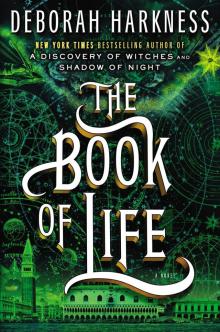 The Book of Life
The Book of Life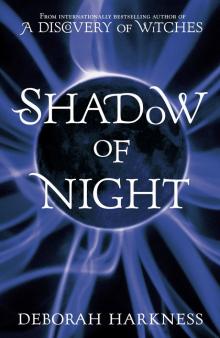 Shadow of Night
Shadow of Night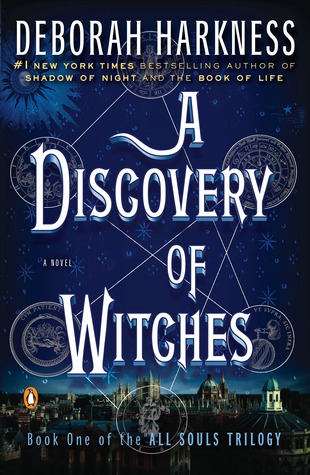 A Discovery of Witches
A Discovery of Witches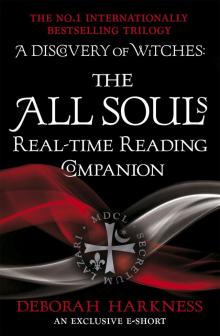 The All Souls Real-Time Reading Companion
The All Souls Real-Time Reading Companion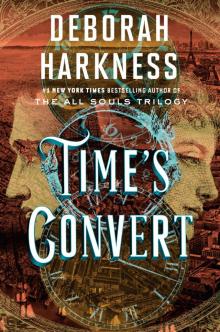 Time's Convert
Time's Convert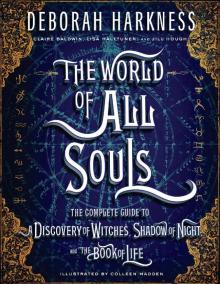 The World of All Souls
The World of All Souls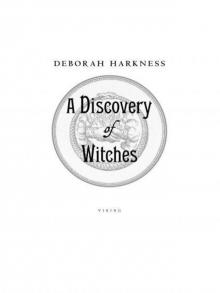 A Discovery of Witches: A Novel (All Souls Trilogy)
A Discovery of Witches: A Novel (All Souls Trilogy) Shadow of Night: A Novel
Shadow of Night: A Novel